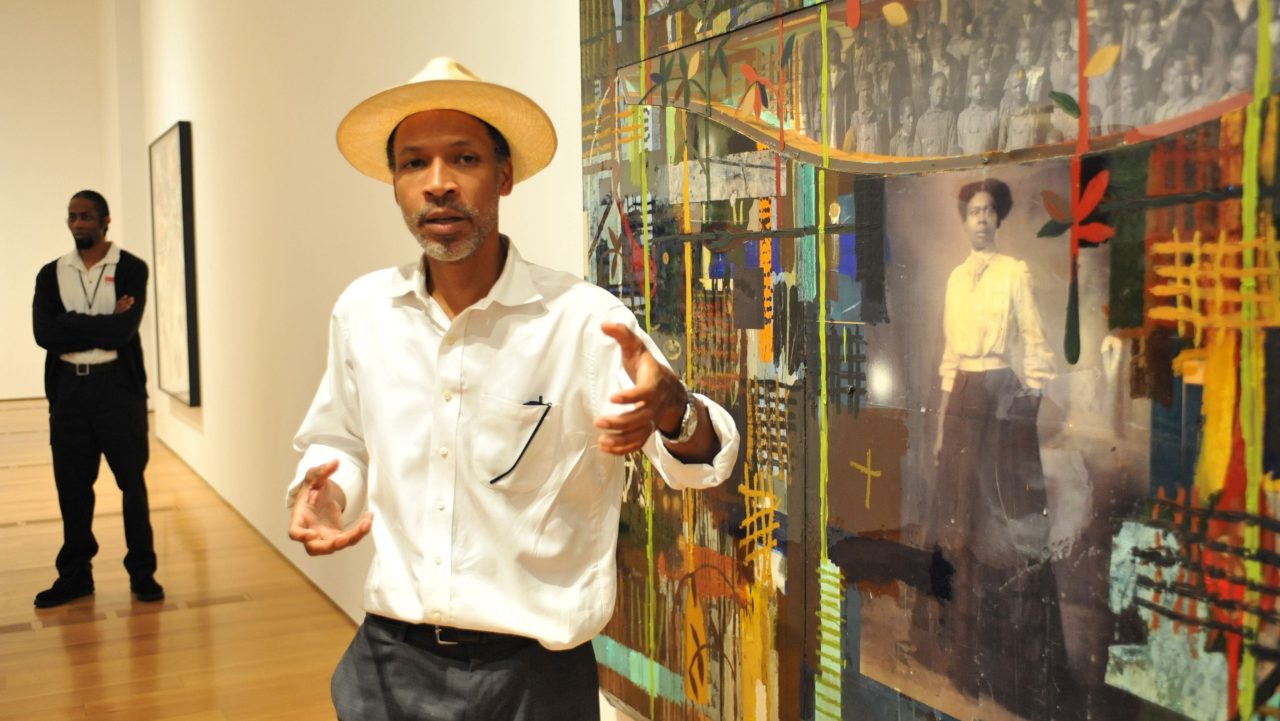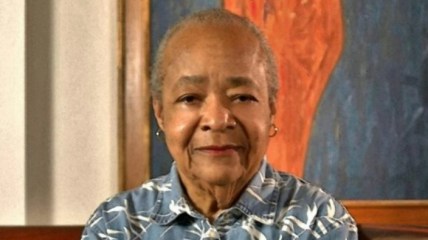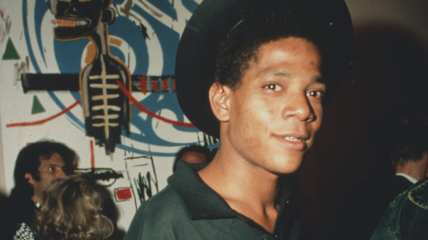Trailblazing artist Radcliffe Bailey dies at 55 after battling brain cancer
Frequently incorporating a sound element, Bailey's sculptural assemblages and paintings evoked Black Americans' past, present and future via existing images and objects.
Radcliffe Bailey, whose trailblazing career as an artist lasted three decades and saw him construct an outstanding body of work that placed artifacts he gathered into a continuum of Black history, has died at 55.
Bailey’s brother, Roy, confirmed he died Tuesday in Atlanta after a fight with brain cancer, ARTnews reported. Survivors also include his parents, Radcliffe Sr. and Brenda; his wife, Leslie Parks Bailey; his daughter, Olivia, and son, Coles. His spouse is the youngest daughter of noted late Black photographer-filmmaker, Gordon Parks.
Jack Shainman Gallery, which represented the artist for years, released a statement calling Bailey “a true force, creating work that resonated with so many on a profoundly intellectual and emotional level.” The New York exhibitors went on to say, “We could not be more appreciative of the years we’ve spent collaborating as colleagues, though above all, we are beyond grateful for the friendship that has blossomed from our time together.”

Frequently incorporating sound, Bailey’s sculptural assemblages and paintings summoned Black Americans’ past, present and future using existing images and objects, including tintypes from his family’s collection, Georgia red clay, shipping tarps and African figurines.
His art was extensively viewed and appreciated in Atlanta, where his family relocated from New Jersey when he was a child and a city he considered home until his death. He built a concrete amphitheater for the Cascade Nature Preserve, which has hosted plays and concerts.
Bailey’s piece “Saints,” a 40-foot-long commission for the city’s airport, features photographs of his relatives set within an abstract pattern and among a Kongo cosmogram, a recurring symbol in the Bakongo religion that represents a circular transference between this world and spiritual realms.
As an undergraduate, he studied sculpture at the Atlanta College of Art before switching to painting.
“It was easier to move painting than sculpture, and my work has always fallen between the two,” Bailey remarked in an interview with Bomb magazine, ARTnews reported. “Some people see me as a painter, but I don’t see myself as a painter or a sculptor, just an artist.”
His early works from the 1990s combine tintypes from family albums acquired from his grandmother, indicating historical links that reach well beyond his genealogy. For example, “Strangest Fruit” (1997) displays an older portrait of a man seated in a chair and carrying a cane; the title references the 1939 classic song about lynching by Billie Holiday.
Bailey’s later works were more expansive. “Nommo,” a piece created for the 2019 Istanbul Biennial, is a reproduction of the hull of the Clotilda ship that brought enslaved West Africans to Alabama following the prohibition of slavery in the U.S.
“Windward Coast” is one of his most well-known works, with the 2009-11 installation using 35,000 piano keys on the floor with a Black man’s head peeking from the pile. The piece, which features a rumbling soundscape emitting from a conch shell, conveys the precariousness of Black existence, the pain caused by slavery that echoes over the ages and the influence that sound and music have had on Bailey and other appreciative community members.
He returned to painting later, creating abstractions referencing some of his previous themes, such as rails across stretched tarps.
“I always thought the surreal was real to Black people,” Bailey explained in an interview with Art in America, “and in that way, I wanted to represent these two different worlds.”
Never miss a beat: Get our daily stories straight to your inbox with theGrio’s newsletter.


